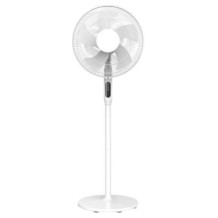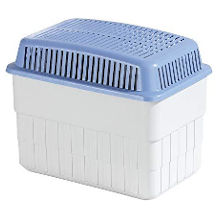Portable air cooler purchasing advice: how to choose the right product
- What you need to know
- Mini air coolers are also called mini evaporative coolers, mini air coolers and mini air conditioners, although the latter often leads to misunderstandings.
- Air coolers operate on the evaporation principle: Sucked air is led past cold water inside. The water evaporates and the outflowing air cools down.
- In summer, for example, the devices can provide a little refreshment in the immediate vicinity of the device when working at a desk.
- The ability to cool down an entire room is not available with the mini air coolers. In warm and humid conditions, the devices reach their performance limits.
- Depending on the model, you have to plan with costs between 20 and 50 euros.
Cool breeze or empty advertising promises?
On warm summer days, the air often stands in the apartment. When the windows are opened and still no pleasant breeze comes in, offers on mini air coolers come in handy. Manufacturers advertise that they cool the air in the room and thus provide a more pleasant climate so that everyday tasks are easier to perform. But how do these newfangled devices work, what can they do and what are their limitations?
Differentiation from air conditioners sometimes difficult
Sometimes the distinction is difficult, as some manufacturers also market their offered mini air coolers under the name mini air conditioner, which can lead to confusion and misunderstanding among consumers. Air conditioners are a separate category of devices, because the technology requires a lot of space, and the models often cost several hundred dollars.
How do air coolers work?
Unlike air conditioners, air coolers do not require refrigerant. Air conditioners carry this refrigerant in a closed circuit to cool down the intake air. This is an effective, but also energy-intensive process.
Air coolers, also known as evaporative coolers, on the other hand, are simply fans in disguise that also have a water tank. They cool their immediate environment by blowing the intake air through a textile – a type of cloth or fleece – soaked in water, which then evaporates and cools the outflowing air. This evaporation process requires some energy, which in turn is extracted from the room air.
The material used is kept moist in a water bath. To do this, users must refill the water tank at regular intervals. Since ambient air can only absorb a limited amount of water on its way to saturation, the effectiveness of air coolers decreases as humidity increases. Regular cleaning of the water tank and emptying it when not in use is also important to counteract germ formation.
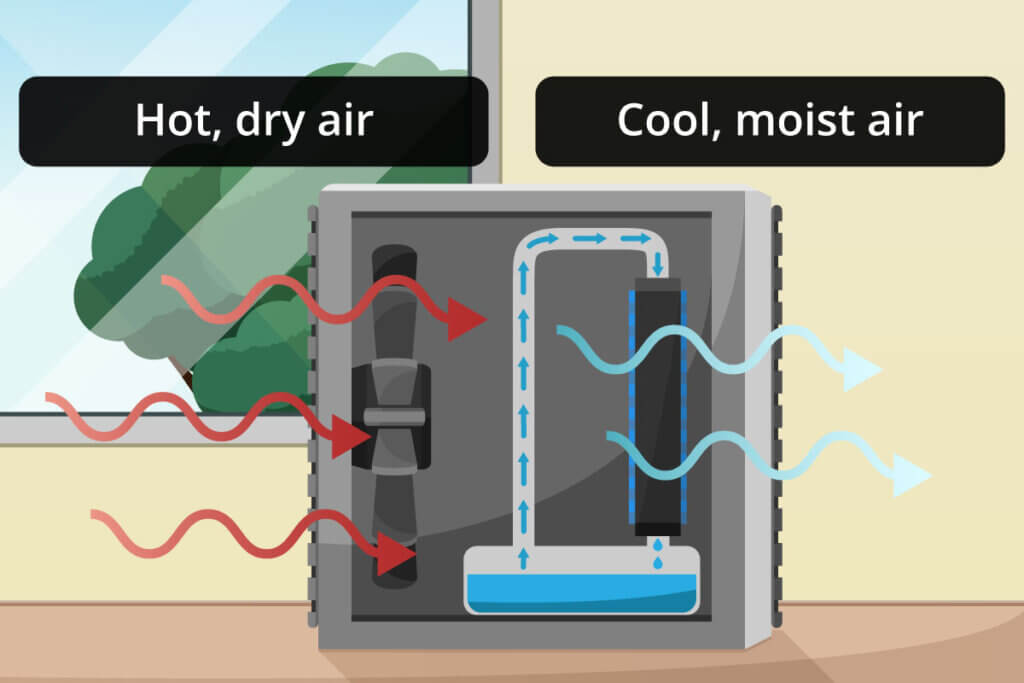
For which applications are air coolers suitable?
Air coolers are designed primarily for refreshment on hot summer days. It is a low-cost and energy-efficient solution in operation. However, the air coolers cannot offer constant values in terms of room temperature and humidity in different weather conditions. Especially on very hot days with high humidity, they do little. This is especially true of the small, cuboid devices often referred to as mini air coolers. In these cases, only air conditioning will help.
The special thing about mini air coolers
Mini air coolers are designed in a practical cube shape. With dimensions ranging from about 17 x 17 x 17 to 20 x 20 x 20 centimeters and weighing one to two kilograms, they are very compact and can be used just about anywhere in the house. Often, larger models are also called mini air coolers, which, strictly speaking, no longer belong to the mini models in terms of dimensions, but make up for this shortcoming with higher performance. Many of the small models do not require a power cord and are instead powered by a rechargeable battery. This not only makes them particularly flexible, but also eliminates the need to search for a free power outlet nearby, and the small devices do not pose a tripping hazard thanks to their cordless design.
The design of air coolers is much simpler than air conditioners and, above all, the devices consume much less energy. While the electricity bill for mobile air conditioners with an exhaust hose can quickly run into the three-digit euro range during a summer, a mini air cooler only generates electricity costs of just under one euro during the same period.
Mainly, the fan used requires electricity. Air conditioners, on the other hand, must provide power to the compressor responsible for condensing the refrigerant and pumping it through the closed system. An air cooler also has a clear advantage in terms of noise level. The noise generated by the rotation of the fan is barely perceptible, while the typical hum is generated during the operation of air conditioners. Another clear advantage: No installation measures such as laying an exhaust hose are necessary for operation. In addition, many mini air cooler models do not require power, as they run on rechargeable batteries that can be recharged.

The critical thing about mini air coolers
Tests regularly show that there is a big difference between air coolers and air conditioners, and many buyers are regularly disappointed with the cooling performance. The usual effective range of a mini evaporator is one to two meters. Especially very cheap no-name models from the Far East do not achieve this performance. The effect can also be attributed to the so-called adiabatic cooling. What sounds complicated is nothing more than the natural evaporation effect. So it is not so much the whole room that is cooled down, but rather a pleasant cooling effect directly on the skin. If the temperature in a room is very high or the room already has a high air temperature, the effect often fizzles out completely. In terms of cooling capacity, a maximum temperature difference of one to three degrees Celsius is possible in the direct vicinity of the air outlet. Some manufacturers advertise this as the “personal microclimate” of the user.
However, after a comparatively short operating time of a few hours, the room becomes increasingly saturated with moisture in this way. Especially on very warm days, continued operationis then no longer possible without additional ventilation. The indoor climate is then even perceived as muggy. In addition, the efficiency decreases when the air in the room is humid. If an actual reduction in room temperature is to be achieved, there is no way around a multisplit air conditioner or a mobile air conditioner. However, these variants are associated with high acquisition costs and an installation effort.
Advantages
- Inexpensive to purchase
- Favorable in operation
- Energy efficient
- Quiet
- Immediately usable without installation
- Low space requirement
- Refreshment in the immediate vicinity of the outlet
- Can be taken everywhere
- No refrigerant needed
Disadvantages
- Hardly measurable temperature difference
- Not very effective in larger rooms
- Not functional in high humidity conditions
- No dehumidification possible
Criteria that can influence the choice of model
If you want to buy a mini air cooler, there are some criteria that you should consider so that you choose a model that suits you. These include the operating volume, a timer function or a remote control.
Power supply
Most models can be powered from any USB port on the computer or laptop. Other devices have a cable for the socket. Convenient are air coolers that allow you to choose between the two options. Since the mini air coolers have a very low power consumption, it does not make a difference whether they draw their energy via USB cable or power plug, unlike more power-hungry devices.
Battery
Air coolers that rely on a rechargeable battery instead of a power supply via cable are still clearly in the minority. Reasons for this could be seen in a more expensive purchase price and a higher total weight triggered by the battery storage.
Water tank size
The size of the water tank in mini air coolers is between 200 and 1,000 milliliters. The larger this turns out to be, the less often it needs to be replenished. By definition, models with water tanks of several liters are no longer devices that are classified in the category of “mini”.
Volume
The models in our selection emit between 39 and 60 decibelsat their respective maximum power levels. An increase of 10 decibels is perceived as a doubling of the volume. thus, 50 decibels would already be perceived as twice as loud as 40, and the same applies again for the increase to 60 decibels. Operating directly in front of the face would provide the maximum possible refreshment, but would also be perceived as unpleasantly loud by most.
Speed levels
The number of speed levels is decisive in ensuring that they can bring the cooling capacity and the operating volume to a tolerable level. Most models have three power levels.
Timer
A timer allows you to predetermine after what time the air cooler will turn off. This is an advantage, for example, if you want to let the unit run on without water to remove moisture from the filter and thus counteract the formation of mold. With a bit of searching, replaceable filters can be found online for most devices. A swap should take place every six months. Since many consumers only operate the unit during the summer months, the filter only needs to be replaced once.
LED lighting
Some models include a feature that is certainly unimportant for the actual operation, but still visually appealing, namely an LED illumination of the casing. Pulsating in different colors, this makes the mini air cooler a real eye-catcher. Some models have mood lights and a night light function.
Carrying strap
A few models, such as the one from Beurer, have a carrying strap on the top, by means of which the air cooler can be easily transported.
Remote control
A remote control is almost never part of the scope of delivery for devices of this size. Since a cooling effect with this type of device pretty much only occurs when you position the device directly in front of your own face, a remote control is relatively superfluous.
Image 1: © FinalCheck | Image 2: © Africa Studio / stock.adobe.com

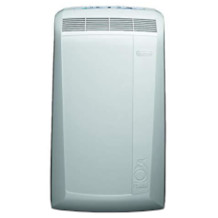
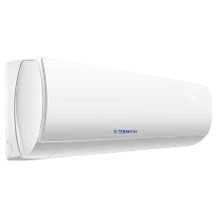
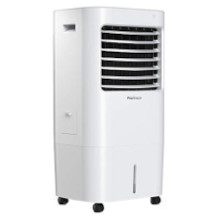
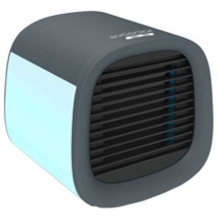
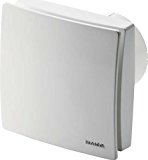
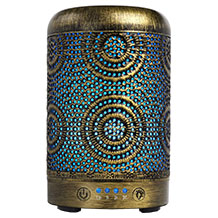
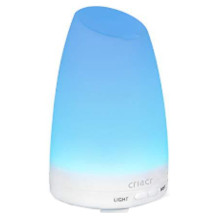







 3,340 reviews
3,340 reviews

